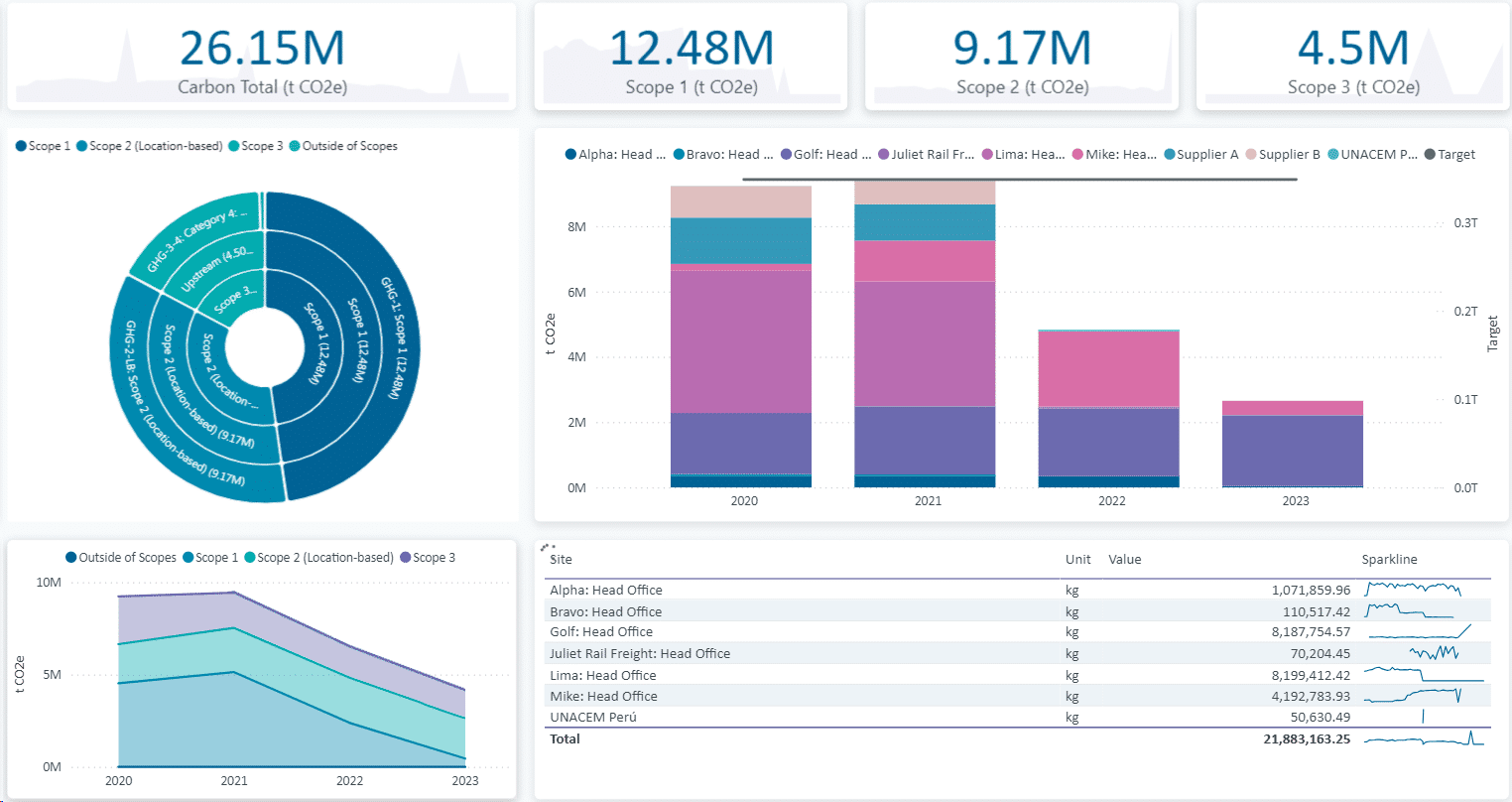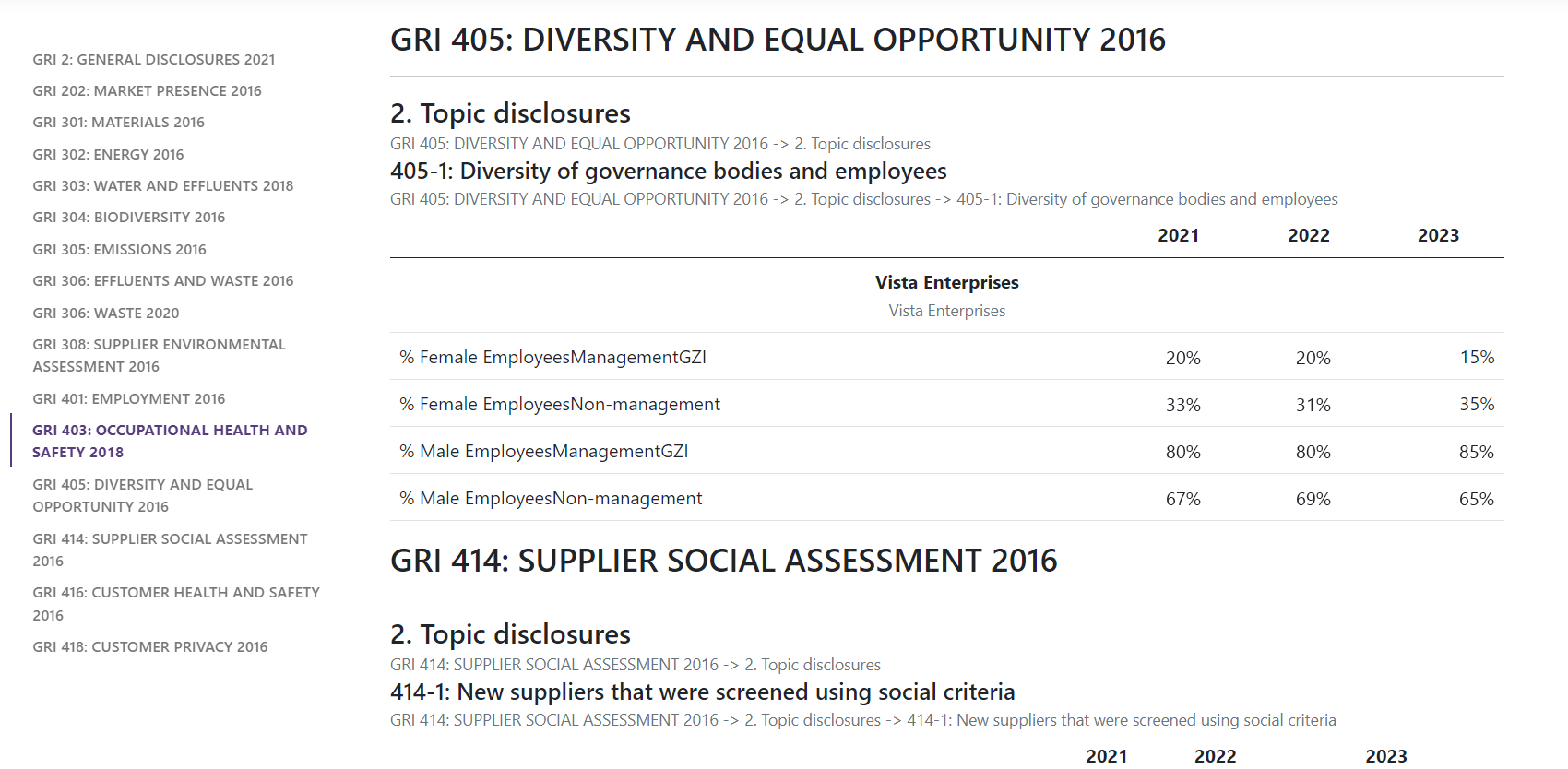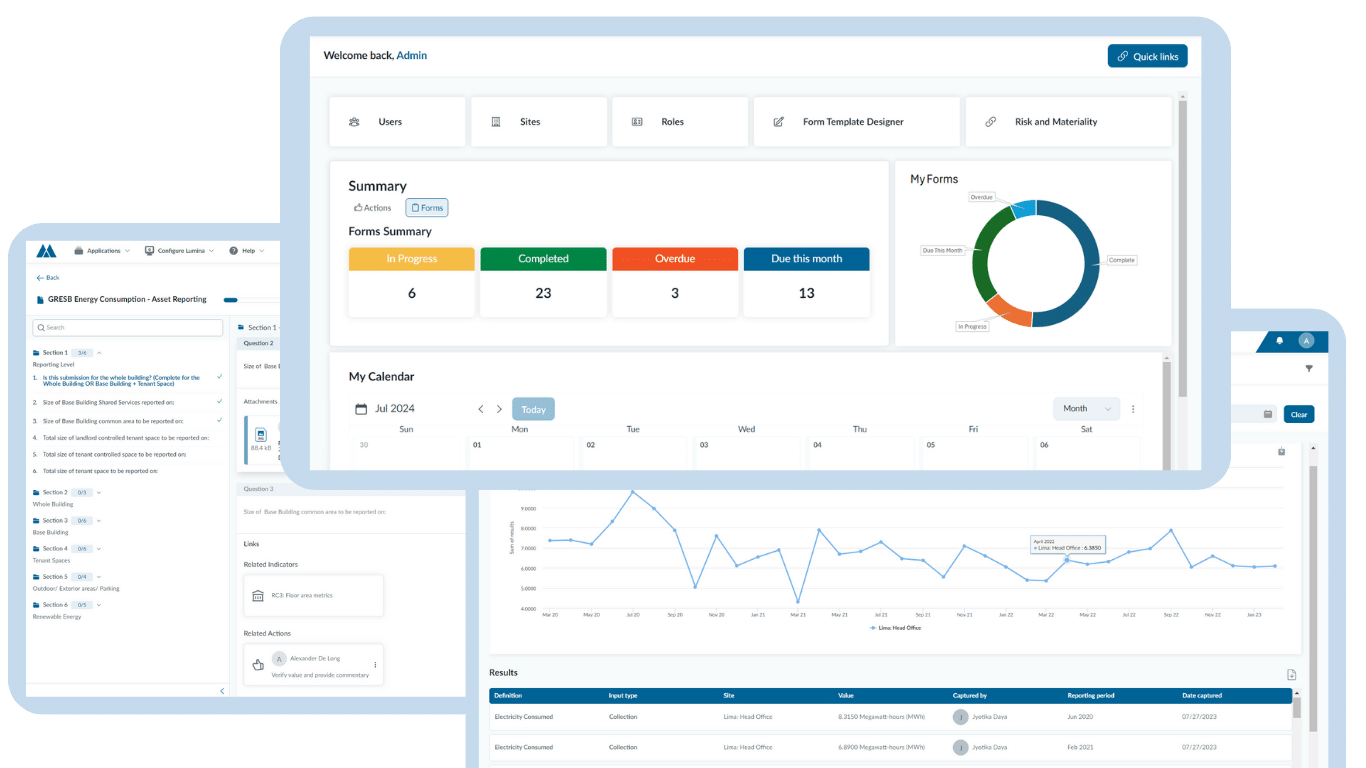Understanding the GRI Standards

Founded in 1997, the Global Reporting Initiative (GRI) is the most widely adopted sustainability disclosure standard with more than 10,000 companies across over 100 countries participating in the disclosures and is essential for organizations committed to responsible business practices. The GRI standards provide a comprehensive framework for reporting on economic, environmental, and social impacts.
GRI reporting is open to any organization, public or private, and is available in 12 languages.
Why GRI Matters

- Global Benchmark: Recognized worldwide, GRI standards set the benchmark for sustainability reporting.
- Holistic Approach: Covers a wide range of topics, ensuring a thorough assessment of an organization’s impact.
- Enhanced Credibility: Builds trust with stakeholders through consistent and transparent reporting.
Essential Elements of GRI Reporting

- Materiality: Identifying and reporting on the most significant impacts.
- Stakeholder Inclusiveness: Engaging with diverse sets of stakeholders to understand their concerns and expectations.
- Sustainability Context: Reporting within the broader context of sustainability.
- Thoroughness: Provide a complete picture ensuring all relevant information is included for a comprehensive report.
GRI Reporting Standards

1. Universal Standards: The universal standards provide general information about the reporting organization and identify material topics for which disclosures are provided in the topic standards.
2. Sector Standards: More focused details for organizations in specific industries. GRI currently provides four sector-specific standards, prioritizing industries it deems to have the most significant environmental, social, and economic impacts
3. Topic Standards: The topic standards focus on material issues related to economic, environmental, and people (including human rights) impacts as identified by the reporting organization in the universal standards section.
How GRI Relates to Double Materiality
For companies to report on sustainability, they must identify issues that are material to their businesses. Typically, the first focus is how sustainability issues impact the company itself through the lens of risk and opportunity; this is referred to as financial materiality (see ISSB).
The other side of double materiality refers to the impact an organization has on sustainability topics and is often called impact materiality. GRI forms the basis for, and is widely regarded as the authority on, impact materiality for corporate reporting.
Get Certified
GRI offers a variety of online and in-person courses to help professionals and teams improve their sustainability reporting skills. An official certification is globally applicable, empowers professionals to demonstrate their sustainability acumen, and enhances credibility of their reports.
Connect with one of our experts to find out how IsoMetrix can provide your team with exclusive rates for GRI Academy courses.






